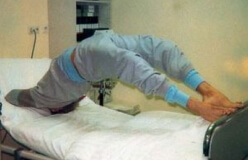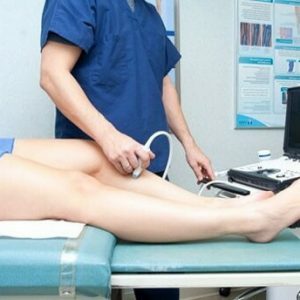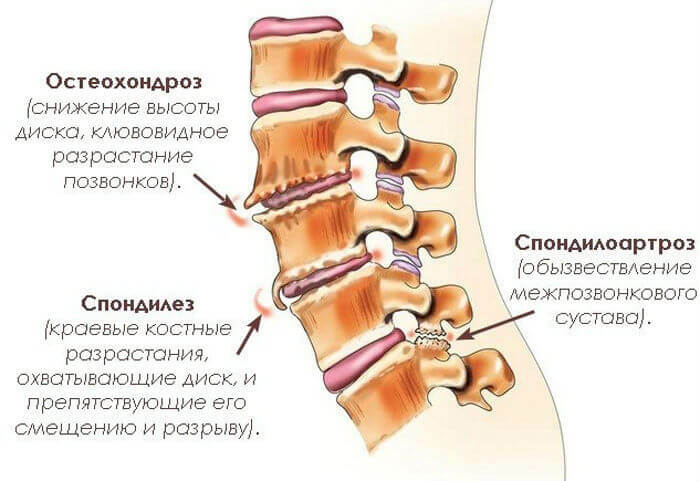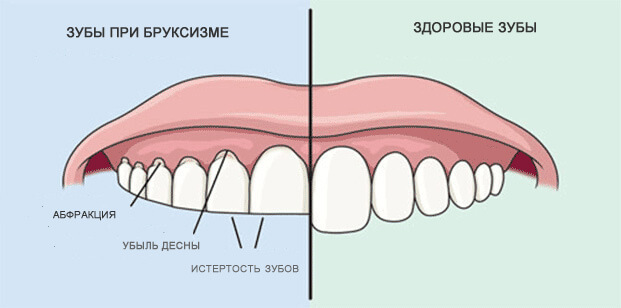Epilepsy in adults
 Epilepsy in adults is a latent disease of the mental and neurological sphere, it is very common, because according to statistics almost every hundredth person is sick with this pathology. It occurs in the general population in a percentage of 8-10% of the population, which is a significant part of the world population.
Epilepsy in adults is a latent disease of the mental and neurological sphere, it is very common, because according to statistics almost every hundredth person is sick with this pathology. It occurs in the general population in a percentage of 8-10% of the population, which is a significant part of the world population.
The microsymptoms of epilepsy in adults, even manifest themselves imperceptibly for the people themselves, that is, an incredible number of people and do not realize that they have certain symptoms of epilepsy. Epilepsy of the second part of the population who know about their disease, hide their pathology, as in society they are negative towards such people. There is their extensive stigmatization, and this, in turn, and forms certain certain difficulties in all spheres of life( economic, moral, socio-cultural, ethical).And today, in most countries of the civilized world, there are certain limits for patients with epilepsy( a ban on driving a car, choosing a qualification).
Epilepsy in adults manifests itself in typical repetitions of epicas, different in intensity and character. Patients are predisposed to spontaneous emergence of epicuspids, which manifest themselves as motor disorders, temporary distortions of the sensitive sphere, motor disorders, thinking and autonomic symptoms, pre-coma.
When examining the pathogenesis, it becomes clear that such changes are caused by the following: when suddenly a strong overexcitation of neurons occurs discharge, with the formation of a convulsive focus, which in the future provokes epipristup. In this case, there are no injuries, as such, in the brain, but only the cellular nervous structures and the electro-activity of the brain have been altered. Such modifications may be caused by: blood circulation ischemia, perinatal pathology, hereditary anamnesis, craniocerebral trauma, somatic diseases, persistent viral infections, neoplasms, metabolic metabolic disorders, stroke, toxic-chemical effects. In the area of damage, scar tissue with a cyst inside is organized, it is this structure that presses on adjacent tissue formations and nerve endings in the motor zone, which provokes convulsions.
Convulsive readiness, can manifest itself with minimal electroexcitation of the focus - this will be the absence of epilepsy in adults( short-term, temporary exclusion of consciousness without seizures).
The first signs of epilepsy in adults often appear for the first time at a young age, the senile form, tied with the weakness of cephalic functions, is much less common.
Classify epilepsy in adults in the following categories:
• Idiopathic benign epilepsy in adults is one of the easiest and well-treatable forms of inpatient management.
• Secondary symptomatic epilepsy in adults - is formed in the presence of pathologically damaging factors.
• Generalized epilepsy in adults - bilateral, without focal manifestations. It includes: tonic-clonic epicuspids and absense epilepsy in adults.
• Partial epiphystones are the most common form.
• Jackson's epilepsy in adults is a form of illness in which there is a tendency to generalize seizures, with their degeneration from simple to complex.
• Post traumatic epilepsy in adults develops after a skull injury.
• Alcohol-associated epilepsy in adults develops with alcohol abuse, brain destruction occurs. It has been developing very slowly, for decades.
• Nighttime epilepsy in adults - is found during sleep, with a bite of the tongue muscle, uncontrolled urinary excretion, and high leakage.
Epilepsy in adults: the causes of
Causal factors of epilepsy in adults are not reliably established, the most presumed risk factor is heredity, because about 40% of people with epipriplets had cases of this disease in their genus.
The following are the risky provocateurs:
- traumatic factors of the craniocerebral profile throughout life, because even the trauma obtained in the process of birth can let you know even after decades;
- ischemia, especially in the elderly;
- brain infections( meningitis, meningococcemia, encephalitis, meningoencephalitis, brain abscess);
- cephalal neoplasm and widespread sclerosis;
- lack of supply of the brain with oxygen for its full functional use and pathology of the bloodstream of cerebral vessels;
- the effect of the constant use of drugs: antidepressants, antipsychotics, sedating tablets, antibiotics and bronchodilators;
- use at least once drugs, especially amphetamines, cocaine, ephedrine - they are the most tropic brain tissue-elements and easily pass over the obstacle barrier - the blood-brain;
- hereditary genetic pathologies;
- the older generation in seventy years;
- postpartum trauma in an epileptic patient;
- cervical pathology: osteochondrosis with vertebrobasilar disorders;
- alcohol abuse;
is an antiphospholipid syndrome.
Epilepsy in adults: symptoms and signs
Symptom complex is individual, due to differences in the processes of brain nerve activity in different types of people. But there is a dependence on the zonality of the brain lesion in all equally, and the symptom complex is a direct reflection of the connection with the affected department in the tissue cephalic structure.
The first signs of epilepsy in adults can be as follows: motor disorders, the pathology of the talking apparatus, decreased or vice versa increased muscle tone, shifts in the functioning of the psyche of a particular individual.
epipripadki of symptoms also vary in different subspecies:
→ Jacksonian epipristupy - abnormal lesion that has boundaries in structurally-woven human brain cells, while not quite in contact with the adjacent, in connection with which we have clearly delineated the symptoms of certain skeletal muscle groups. This symptomatology is short-lived and quick-passing, the body is quickly restored after such cramps. A person is in a Jacksonian attack in an upset consciousness, to establish verbal or any other contact with such a person is not possible. There is no awareness of what is happening in the patient, which makes it difficult to provide first aid. There are contractions of muscles or numbness of the hand, foot, while further distribution with the generalization of the complete also takes place. Phase of epripristupov podoazdelyayutsya:
• Aura harbinger - pathologically anxious, appears in advance, the state with the increase of nervous excitement( abnormal focus of electrical activity of the brain grows and captures all the new zones);
• Tonic convulsions - skeletal muscles suddenly and acutely tense, his head tilted back, a person falls, the body arched and bent pineth occurs stop breathing and turn blue skin, it lasts up to a minute of time;
• Clonic convulsions - the muscles are lively evenly contracted, there is abundant salivation, foaming at the lips, the duration is up to five minutes;
• Stupor - after electroactivity, there is a sharp intensive inhibition of all processes, the musculature relaxes, reflexes can not be induced, the duration is up to half an hour;
• Sleep is the final phase. After awakening the patient may be disturbed by migraine pains, motor disorders.
→ Small seizures are sequential contractions with less intense manifestations than Jackson's epiprids. They are characterized by: changes in facial expression - grimace, a sharp fall in tone with sudden emphasis person on the floor, but it is important to note, consciousness is stored, absence seizures occasionally occur phenomena, or vice versa hypertonicity with astonishment.
→ status epilepticus - a sequence of several at once epipristupov, for a small period of time, the breaks are not recovered consciousness, the tone is lowered, reflexes are absent, observed: mirdiaz or cramps, tachycardia, hypoxia and edema of the brain cells, with irreversible further consequences, including death.
All classification categories are characterized by the following signs of epicas:
- sudden sudden drop;
- screaming from a spasm of the glottis;
- tilting the head, natuga musculation of the body;
- intermittent sibilant breathing, with possible apnea and swelling of the cervical vessels;
- marbling of the skin or cyanosis of it;
- the numbness of the jaws;
- chaotic muscle movements;
- tongue failure, foam from the mouth with bruising from mucus shell or tongue;
- complete relaxation and retreat into sleep.
All these episprints will debut and end very sharply and spontaneously.
Aura has symptoms: epigastric discomfort, marbling of the skin, sweating, piloerection, optical hallucinations, hemianopsia, scents( metallic taste, bitter taste), auditory hallucinations( crackling, rustling, music, shouts), irrational fear and dread, euphoria, tachycardiadiscomfort in the chest, nausea, uncontrollable turns eyes and head, cut lips, sucking involuntary contractions, sudden shouting phrases and meaningless words, chills, paresthesias.
epilepsy classification of complex of symptoms in adults:
- Temporal Form: multifaceted symptoms with a particular aura( abdominal cramps, false angina, cardiac arrhythmia and contractile activity of the heart muscle, disorientation, panic, attempted escape, personal failures, the pathology of the sexual environment, violations elektrolitno-Water balance and exchange processes).
- Absence of epilepsy in adults: unexpected fading, missing sight, lack of response to irritating maneuvers.
- Rolandic: paresthesia of the larynx and pharynx, numbness of the gums and lingual apparatus, the clatter of teeth, speech difficulties, hypersalivation, convulsions during sleep.
- Alcohol: with prolonged, for decades, the abuse of alcohol.
- Bessusorozhnaya: the symptoms are confusion and hallucinations, there are delusions and mental disorders.
Personal changes are also observed, they are as follows:
- Character changes: selfishness;pedantry;punctuality;Remorse;Propensity to abnormal attachment;infantilism.
- Impaired thoughts: slowing down the thinking process in adults, "viscosity";Details of events.
- Disorders of the emotional plan: impulsivity;Softness and painful perception of a negative attitude towards oneself.
- Deterioration of the mechanisms of memory and intelligence;dementia.
- Changing the type of temperament.
epilepsy in adults: diagnosis
diagnostic measures to determine the origin of the disease - epilepsy in adults, are shown in the following paragraphs:
- A detailed survey of the general history and the life of previous burdening illnesses and traumatic situations( physical and psychogenic) in the whole of the individual patient, with emphasisOn genetically-hereditary pathology.
- medical specialists carried out a study( neurologist, psychiatrist), to identify the main symptoms: pain in the temples or on the type of migraine, which can serve as the first alarm bell about the rise of the organic nature of the problem.
- One of the mandatory measures - a computer tomogram study, magnetic resonance imaging and positron emission survey on a tomograph.
- Gold method of investigation - electroencephalography of changes in electroactivity of the brain. This method is used to judge "peak-waves" during activity and during a person's sleep. Epileptic waves are important to distinguish between absolutely somatically and psychologically healthy individuals, because they can be temporarily emerged and considered, from a medical point of view, as a variant of the norm. To confirm the diagnosis, several sessions of electroencephalography with provocations, video EEG observations of the daily nature are carried out by monitoring.
- General capillary analysis of blood and biochemical study of venous blood sampling - finding metabolic metabolic pathological manifestations in the human body.
- Consultation of the ophthalmologist( examination for the pathology of swelling in the visual disks) and the definition of the state of the vascular structures of the fundus.
First aid for epilepsy in adults
When a person is detected, the already begun epileptic attacks, each person should be able to provide qualified pre-medical support to the victim, because it is possible by this aid will depend on the life of the individual. Nowadays medical oriented programs are organized on epileptic topics, because this issue is important for the whole modern society.
The algorithm for assisting with epilepsy in adults is as follows:
- It is necessary to try to distinguish the injured person as much as possible from the traumatic things during the epiprip, when falling on the person's ground and when the patient is already convulsing( remove cutting, pricking, suffocating, hard objects).
- Unfasten, at the maximum, or, if possible, remove the crushing attributes of clothing( belts, ties, scarves, zippers, buttons).
- To prevent the tongue from falling and subsequent apnea, you should rotate the head to one side and prevent it from turning, without applying force to keep the limb from traumatizing. Put a soft cloth lining or your clothes under the neck, face and body, do not move the patient( especially on the hill - it may fall), this is done so that the injured epileptic does not hit hard hard on the floor or ground.
- In no case should you try to open your mouth, especially with hard objects or a rotator, this will result in traumatic injuries to both the patient and the person who in this case provides first aid( bite, tooth fracture and swallowing of their fragments, Cracking of a solid object and its swallowing, asphyxiation from such manipulations).
- Do not perform mechanical ventilation by self-mouth-to-mouth technique with an epicenter. It is better in this case to put a soft woven cloth or a handkerchief into your mouth to protect the lingual muscle from cracking and teeth from breaking.
- Do not try to drink with an epi-fit, this will only exacerbate the situation, or the patient will completely choke.
- Track the time range of the epiprip.
- Call for emergency help or ask others about it to provide medical care.
- When a person leaves after an epicripe into a dream, do not wake him up immediately, you have to resolve his nervous system rest from the just experienced shock from an attack.
Epilepsy in adults: treatment of
With timely measures taken and adequate diagnosis, it is possible to talk about further tactics of therapeutic intervention, followed by the development of a rehabilitation program( often lifelong) for patients diagnosed with epilepsy in adults.
When choosing drugs and further treatment, it is necessary to decide on the primary stage - how it will be: outpatient or inpatient( neurological or psychiatric hospital).With an outpatient treatment, the patient is followed by a neurologist or psychiatrist.
Postulates of medical activities pursue the following objectives:
- Anesthesia of epicasis, after all, patients often experience painful sensations before and after the epicentric, not only from the injuries received, but also muscular pains after powerful seizures persist for several days after epipriposition. This is solvable by the systematic use of anticonvulsant or analgesic drugs, the enrichment of food with calcium and magnesium, or the intake of dietary supplements or vitamins rich in these trace elements.
- Prevention in general or at least minimizing the frequency of occurrence of epicasis, it is achievable by the methods of surgical interventions and the correction of the neurological-mental sphere by oral medication.
- Reducing the duration of the epiprip.
- Achieving the main goal - life without seizures and without drug support at once on two counts.
- Minimize adverse events from medications taken.
- Secure society from hypothetically life-threatening individuals with aggressive manifestations of epicas.
Stepwise treatment procedures:
- Differentiation of the type of specific epiprime, for a maximally selected and efficiently constructed treatment regimen.
- Search for the etiopathogenic complex.
Medically the following groups of medications are used:
• Anticonvulsant - groups of anticonvulsants are applicable that lead to a further reduction in the incidence and duration of epi-seizures per se. These drugs are able, in some cases, to prevent the appearance of seizures at all, with their correct methods and adherence to the recommendations of the treating doctor. These drugs include: Carbamazepine, Levetiracetam, Ethosuximide.
• Neurotropic medicines, which in their action inhibit or, on the contrary, stimulate the mechanism of the passage of impulse excitation of the nervous structures, in particular over the processes of the glia of the brain.
• Psychotropic drugs are able to completely change the psychological perception of the person surrounding factors and functional abilities of the human nervous system.
• Racetam - psychoactive nootropics.
Non-medicamentous methods of treatment include: surgical procedure, Wojta method, ketogenic balanced diet.
It is worthwhile to draw the patient's attention to a set of rules for more effective treatment. In the period of medical manipulations and oral medication, the following rules should be observed:
- Strictly adhere to the schedule and timing of medications.
- Do not substitute for medicinal analogues yourself or include other groups of drugs that can inhibit the action of antiepileptic drugs, and the patient himself will not guess about it, you should always consult your doctor.
- Do not stop already begun treatment spontaneously, this leads to serious consequences.
- In time to notify the attending physician about the symptoms arising during the treatment in the personal state of health.
Antiepileptic therapy helps to suppress epilepsy in adults in 63% of the population, in 18% - to minimize the frequency of manifestations.
Until today, no medicine or method has been invented for complete cure of the disease, but the measures taken allow a person to live fully in society without limiting their capabilities.
Diet for epilepsy in adults
Changing the diet can significantly affect the frequency of manifestations of epi-seizures and the quality of life of the patient with epiprids in general, up to the complete eradication of this ailment. Such a diet is used only in conjunction with medically administered treatment and only by the attending physician, it is not allowed to apply a ketogenic diet on your own, as this can have a bad effect on the general well-being of a person.
The diet for epilepsy is both a method of treatment and an instrument for preventing secondary pathological changes in the body. The diet of the patient should be balanced, without particularly strict restrictions and any one meal schedule.
The ketogenic diet for epilepsy in adults is often used in a hospital setting, because there is a possibility of strict control of the patient's food and it needs to be monitored. Complications are possible. Such a diet for epilepsy in adults includes the content of the menu 70% of fats and only 30% falls on the ratio of proteins - carbohydrates.
The mechanism of its work is anticonvulsant activity of ketones( these are compounds of an organic nature that can suppress convulsions arising in the brain structures).
The list of products allowed for epilepsy in adults: meat products( it is advisable to eat pork and beef meat), fish products, eggs, cottage cheese, milk, hard cheeses, sour cream, fermented milk, yogurt, butter, olive or vegetable, vegetable products, Fruit, cereals, soups, low-fat broths, by-products( liver, heart and kidneys), loose tea( it is desirable to limit coffee in use), bread, biscuits, drying.
The list of products banned for epilepsy in adults: alcohol, salty foods, pickled dishes, pickles, sauces, seasonings, smoked products, chocolate, cocoa-containing.
It is important to understand that the prescribed diet for epiprids, as well as any other, is an individual phenomenon, the selection of dishes is performed for a specific person in conjunction with a doctor. This is a long-term process, but the result justifies everything - the patient's condition is on the mend, and the frequency and strength of epicasps is reduced.



